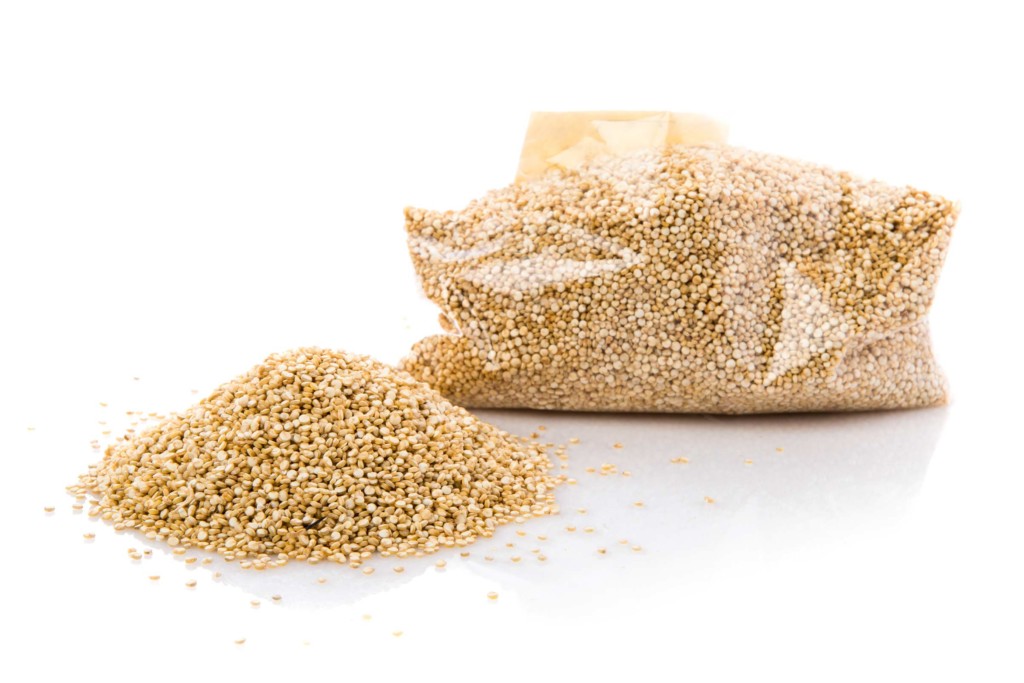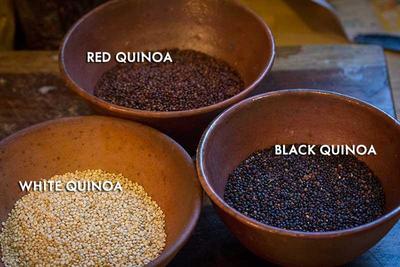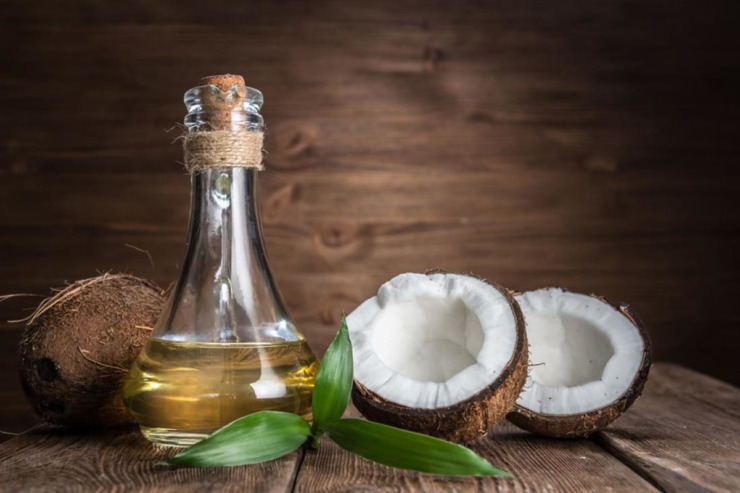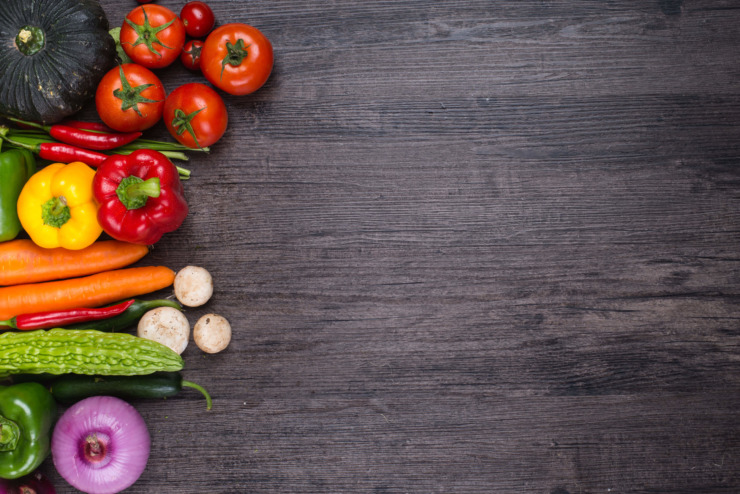MARIA VLACHAKI – NUTRITIONIST
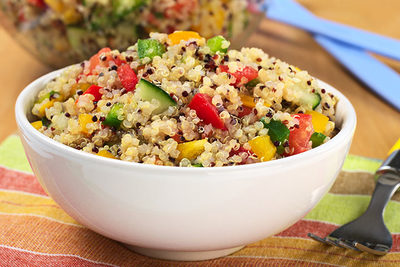
NUTRITIONAL COMPOSITIVITY OF QUINOA INGREDIENTS
1 cup (180 g) of cooked Quinoa, Nutrients % of daily needs
Manganese 58% (1.2 mg)
Magnesium 30% (118 mg)
Phosphorus 28% (281 mg)
Folic acid 19% (77.7 mcg)
Copper 18% (0.4 mg)
Iron 15% (2.8 mg)
Zinc 13% (2.0 mg)
Vitamin B1 13% (0.2 mg)
Vitamin B2 12% (0.2 mg)
Vitamin B6 11% (0.2 mg)
Also, the 180g. provide the body with 222 calories, 39 grams of carbohydrates, 4 grams of fat, 8.1 grams of protein, 5 grams of fiber and small amounts of calcium, vitamin B3 and E. It does not contain gluten and is usually organically grown
HEALTH BENEFITS
– It contains a high concentration of flavonoids (36.2 to 144.3 mg/ 100 g of food, mainly Quercetin and Kaempferol), these substances have antioxidant, anti-inflammatory, antiviral and anti-cancer activity.
– Its fibre content ranges from 10-16 g/100 g or 17-27 g /1 cup of raw Quinoa, much higher than most cereals.
– It does not contain gluten and can be used by people with intolerance. Quinoa is considered to be a better choice than potato, corn and rice flour as it can provide a higher amount of protein, iron, calcium, fibre and antioxidants.
– It contains all the “essential” amino acids and is considered a “complete” protein. Most plant foods are deficient in important amino acids , such as lysine. Provides 8 g of protein
“high biological value” per cup of cooked Quinoa or 4.5 g per 100 g and can be a key source of protein for vegetarians.
– It has a low glycemic index which means that it does not increase blood sugar levels and can be consumed by diabetic patients. Of course, it should be consumed with special care since it has high amounts of carbohydrates. A recent study (2004) found that Quinoa compared to pasta and gluten-free bread reduces blood sugar, insulin and triglyceride levels much more than pasta and gluten-free bread.
– It contains many minerals such as calcium, iron, magnesium, zinc, etc., which have reduced absorption due to its content of phytic acid. However, if you soak Quinoa in water before cooking it, you can reduce the phytic acid content and thus increase the bioavailability of the minerals.
– It is high in oxalates, which reduce calcium absorption and should be consumed with caution by people with kidney stones.
– It is rich in antioxidants which contribute significantly to the fight against aging and many diseases. It appears to have a higher content of these substances than other cereals, pseudo-cereals and pulses.
– 25% of the fatty acids found in Quinoa are in the form of oleic acid, which has beneficial heart benefits, and 8% in the form of alpha-linolenic acid or ALA which has been associated with a reduced risk of inflammation.
COOKING METHOD
If you want to include Quinoa in your diet you should be aware of the ways to prepare it. First you need to rinse it very well with water to remove the saponins that are on its outer shell and give it a bitter taste. Put 2 cups of water, 1 cup of Quinoa and a little salt in a pot, let it boil for 15-20 minutes. When it boils it should have absorbed most of the water.
How to enjoy it
– Quinoa flakes can be eaten for breakfast with fruit, milk or yoghurt
– Add fruit and nuts to cooked Quinoa and eat it for breakfast.
– Combine it with beans, pumpkin seeds, spring onions and coriander.
– Replace pasta recipes with Quinoa.
– Add Quinoa to vegetable soups
– You can make biscuits, muffins, cakes, pasta, bread, pies with Quinoa flour
– When making tabbouleh, replace the bulgur with Quinoa
BIBLIOGRAPHY:
1. Kolata, Alan L. (2009). “Quinoa” Quinoa: Production, Consumption and Social Value in Historical Context. Department of Anthropology, The University of Chicago.
2. J. Mauricio Peñarrieta et al. Total antioxidant capacity and content of flavonoids and other phenolic compounds in canihua (Chenopodium pallidicaule): an Andean pseudocereal. Mol Nutr Food Res. 2008 ; 52(6):708-17.
3. Ritva Repo-Carrasco-Valenciaa et all. Mattilab Flavonoids and other phenolic compounds in Andean indigenous grains: quinoa (Chenopodium quinoa), kañiwa (Chenopodium pallidicaule) and kiwicha (Amaranthus caudatus). Food Chemistry 2010; 120 (1): 128-133
4. Ritva Repo-Carrasco-Valenciaa, lesli Astuhuaman Serna. Quinoa (Chenopodium quinoa, Willd.) as a source of dietary fiber and other functional components. Ciênc. Tecnol. Aliment. 2011; 31(1): 225-230
5. A. R. Lee et al. The effect of substituting alternative grains in the diet on the nutritional profile of the gluten-free diet. J Hum Nutr Diet. 2009;22(4):359-63.
6. H. Walter Lopez et all. Minerals and phytic acid interactions: is it a real problem for human nutrition? International Journal of Food Science & Technology 2002; 37(7), 727-739
7. C. Betri et all. in vitro starch digestibility and in vivo glucose response of gluten-free foods and their gluten counterparts. 2004;43(4):198-204.
8. L.G. Ranilla et all. evaluation of indigenous grains from the Peruvian Andean region for antidiabetes and antihypertension potential using in vitro methods. J Med Food. 2009;12(4):704-13.
9. Lund, MS, RD, Melinda. Intact Grains. Today’s Dietitian. 2014; 15(10) P. 38



